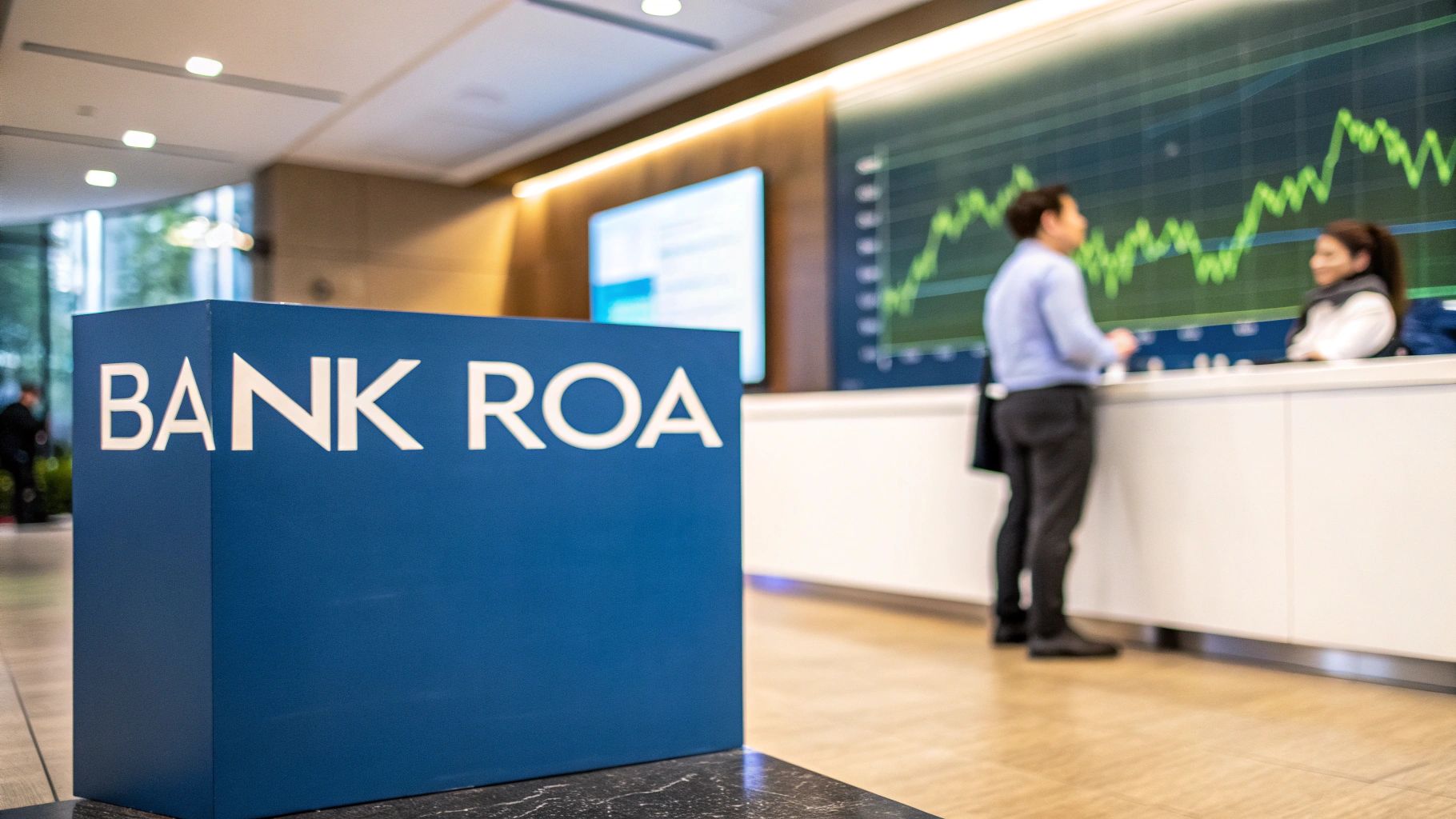← Back to News
Ranking U.S. Banks by Asset Size: Trends, Insights, and Financial Metrics
Banking Knowledge Base3/6/2025Banking Knowledge BaseBank Asset RankingsHistorical Trends in U.S. Bank Asset Growth

U.S. Banking Asset Landscape
- Market Concentration: The top 10 U.S. banks control over 60% of total banking assets, with JPMorgan Chase leading at $3.2 trillion in assets.
- Asset Size Impact: Larger banks benefit from economies of scale, but face increased regulatory scrutiny and complex risk management requirements.
- Growth Drivers: Digital transformation, economic recovery, and strategic mergers have significantly influenced banking asset growth from 2019-2024.
- Beyond Asset Size: Financial metrics like return on assets (ROA), net interest margin, and capital adequacy provide crucial insights into bank performance.
- Future Trends: Technological innovation, fintech partnerships, and evolving consumer preferences will continue to reshape the U.S. banking asset distribution landscape.
Table of Contents
- Understanding Bank Asset Rankings in the U.S. Financial Landscape
- Top 10 Largest U.S. Banks by Total Assets in 2024
- How Do Total Assets Impact a Bank's Financial Performance?
- Historical Trends in U.S. Bank Asset Growth 2019-2024
- Analyzing Key Financial Metrics Beyond Asset Size
- Regional vs National Banks: Asset Size Comparison
- Future Outlook for U.S. Banking Asset Distribution
Understanding Bank Asset Rankings in the U.S. Financial Landscape
Bank assets represent the total economic value of everything a financial institution owns, including loans, securities, cash, and physical property. In the U.S. banking sector, asset size serves as a crucial indicator of a bank's market position and financial strength. The largest banks in the U.S. by assets maintain significant influence over the national economy and financial markets. Asset measurement follows strict regulatory guidelines, with banks reporting their total assets quarterly through standardized financial statements. These measurements include both on-balance-sheet assets and certain off-balance-sheet items, providing a comprehensive view of a bank's financial footprint.Top 10 Largest U.S. Banks by Total Assets in 2025
JPMorgan Chase leads the U.S. banking sector with over $3.2 trillion in assets, followed by Bank of America and Citigroup. These top three institutions collectively control approximately 40% of total banking assets in the United States. Wells Fargo and Goldman Sachs round out the top five, demonstrating the concentration of assets among the largest financial institutions. Market share analysis reveals that the top 10 banks control over 60% of total banking assets in the United States, highlighting the significant market concentration in the industry. This concentration has increased steadily over the past decade through organic growth and strategic acquisitions.How Do Total Assets Impact a Bank's Financial Performance?
Asset size significantly influences a bank's operational efficiency, risk management capabilities, and competitive position. Larger banks benefit from economies of scale, allowing them to spread fixed costs across a broader asset base. This advantage typically results in lower operating costs per dollar of assets and higher profit margins. However, size also brings increased regulatory scrutiny, particularly for institutions designated as systemically important financial institutions (SIFIs). These banks must maintain higher capital reserves and undergo more rigorous stress testing, impacting their operational flexibility and risk management strategies.Historical Trends in U.S. Bank Asset Growth 2019-2025
The U.S. banking sector has experienced substantial asset growth over the past five years, driven by economic expansion, monetary policy changes, and industry consolidation. Digital transformation has accelerated this growth, enabling banks to expand their service offerings and market reach without proportional increases in physical infrastructure. Market events, including the pandemic response and subsequent economic recovery, have significantly influenced asset growth patterns. Low interest rates and government stimulus measures led to unprecedented deposit growth, while merger and acquisition activity has further concentrated assets among the largest institutions.Analyzing Key Financial Metrics Beyond Asset Size
While asset size provides a fundamental measure of bank scale, other key metrics offer crucial insights into operational efficiency and financial health. Return on assets (ROA), net interest margin (NIM), and efficiency ratios help evaluate how effectively banks utilize their assets to generate returns. Capital adequacy ratios, liquidity coverage, and asset quality metrics provide additional context for assessing bank stability and risk management effectiveness. These indicators often reveal significant variations in performance even among banks of similar asset size.Regional vs National Banks: Asset Size Comparison
Regional banks typically maintain assets between $10 billion and $100 billion, focusing on specific geographic markets and relationship banking. These institutions often achieve higher net interest margins and customer satisfaction rates despite their smaller asset base. National banks leverage their larger asset bases to offer diverse products and services across multiple markets. Geographic distribution of banking assets shows significant concentration in major financial centers, with New York, California, and Texas hosting the largest share of banking assets. Regional banks often maintain stronger market positions in mid-sized markets where personal relationships and local market knowledge provide competitive advantages.Future Outlook for U.S. Banking Asset Distribution
The future of U.S. banking asset distribution will likely be shaped by technological innovation, regulatory evolution, and changing consumer preferences. Digital banking adoption continues to blur traditional geographic boundaries, potentially accelerating asset concentration among technologically advanced institutions. Regulatory changes, particularly those affecting capital requirements and market structure, will influence how banks deploy and grow their assets. The increasing role of fintech partnerships and digital transformation initiatives suggests continued evolution in how banking assets are distributed and managed across the industry.Frequently Asked Questions
- What determines a bank's total assets?
- Total assets include all economic resources owned by a bank, such as cash, loans, securities, investments, physical property, and other financial instruments reported on balance sheets according to strict regulatory guidelines.
- Which bank has the largest total assets in the United States?
- JPMorgan Chase leads the U.S. banking sector with over $3.2 trillion in total assets as of 2024, representing approximately 15-20% of total banking assets in the country.
- How do bank assets impact financial performance?
- Bank assets directly influence operational efficiency, risk management capabilities, and competitive positioning. Larger asset bases enable economies of scale, lower operating costs, and potential for higher profit margins.
- Are larger banks always more profitable?
- Not necessarily. While larger banks benefit from economies of scale, profitability depends on multiple factors including asset quality, operational efficiency, net interest margins, and risk management strategies.
- How has digital transformation affected bank assets?
- Digital transformation has accelerated asset growth by enabling banks to expand service offerings, reach broader markets, and reduce physical infrastructure costs while improving operational efficiency.
- What challenges do banks face with large asset portfolios?
- Large asset portfolios face increased regulatory scrutiny, higher capital reserve requirements, complex risk management needs, and the challenge of maintaining consistent performance across diverse financial instruments.
- How do regional banks compete with national banks?
- Regional banks compete through personalized relationship banking, stronger local market knowledge, higher net interest margins, and more targeted customer service, offsetting the broader product range of national banks.
Similar Articles

Brian's Banking Blog
Return on Assets for Banks: A Guide for Executive Decision-Making

Brian's Banking Blog
Optimizing Net Interest Income for Bank Profitability

Brian's Banking Blog
Decoding Credit Union Asset Size for Banks

Brian's Banking Blog
Net Interest Margin in Banks: A Strategic Guide for Executives

Brian's Banking Blog
Mastering Banking Performance Metrics: A Guide for Executives

Brian's Banking Blog
Loan to Deposit Ratio Definition: A Strategic Guide for Bank Executives

Brian's Banking Blog
8 Historic Banks That Merged: Lessons for Today's Executive
![7 Sources for a Comprehensive Banks in Florida List [2025]](https://cdn.outrank.so/a3158354-b714-419c-ba0c-19c8bfd04278/featured-image-44823e69-a8fd-47d4-ae5c-87450e0b2fb0.jpg)
Brian's Banking Blog
7 Sources for a Comprehensive Banks in Florida List [2025]

Brian's Banking Blog
Largest Banks in Texas: A Data-Driven Analysis for Executive Leadership

Brian's Banking Blog